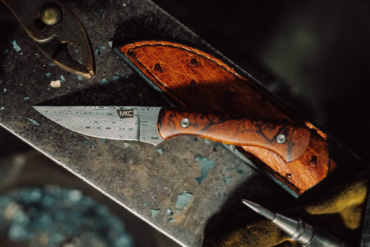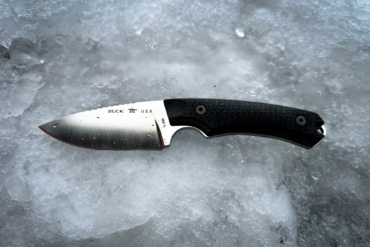Knives are amazingly versatile tools. One benefit of a strong, fixed blade design is that it can be used to cut and split wood, a technique known as “batoning.” Follow these tips to cut branches and split wood safely and efficiently.

Note: Be careful not to hit your hand and be sure the knife blade will swing away from your body or legs after cutting through wood. These techniques are useful in survival situations, but knives can be dangerous. Practice at your own risk.
Also of note: Cutting down standing trees at campgrounds and on many busy public lands is bad form or downright illegal. This primer is intended for backcountry/survival situations. Use common sense!
Making Firewood With a Survival Knife
Pick the right size knife and wood. The longer the blade, the larger the piece of wood it can span, but large logs are tough to break down with a knife. Go after small branches and logs to make the job easier. Once a fire is roaring, larger logs can go on whole.
Pick the right knife. You want a strong fixed-blade survival knife. Don’t use a folding knife; it can close unexpectedly on your hand.
To chop a branch off a trunk, hold the blade at a 90-degree angle to the branch with the sharp edge pointed away from your body. Use another branch (about as big around as a baseball bat handle) to hit the back of the blade into the wood.
With branches up to about two inches in diameter, the branch should cut off in just a couple stout hits.

To chop larger logs or full trees, hold the blade at a 45-degree angle to the trunk or log. Hit the back of the blade with a branch until it is buried in the log. Then, repeat the process from the opposing 45-degree angle to cut a notch out of the log.
Repeat this process from the opposite side, and from other angles if needed, until you can break off the tree or snap the log.
This technique is also useful for cutting saplings for use in shelter construction.


How to Split Sticks Into Fine Kindling
- Stand stick (or small log) on end
- Stick knife into grain
- Grasp the handle firmly
- Use a stout branch to whack the back of the blade into and through the log
- Be careful not to hit your hand!
- Be careful where your knife will go after pounding through the wood. It’s best to do this near the ground or on another large log so your knife doesn’t pound into the dirt.









